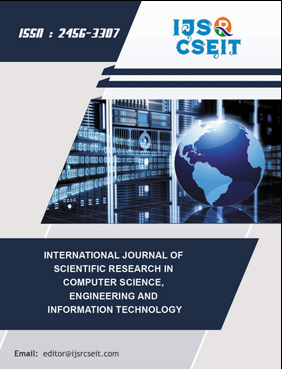Development of Energy-Harvesting Wearable Biomedical Devices: Designing Self-Powered Sensors for Continuous Health Monitoring
DOI:
https://doi.org/10.32628/CSEIT2511113Keywords:
Wearable Biomedical Devices, Piezoelectric Sensor, Thermoelectric Generators, Photovoltaic Cells, Heart Rate Sensor, Temperature Sensors, Artificial Intelligence, IoT, Remote Patient monitoringAbstract
This study investigates the development of energy-harvesting wearable biomedical devices designed to continuously monitor health metrics without the requirement for external power sources. By integrating self-powered sensors that utilize ambient energy, such as body heat and motion, we aim to evaluate the performance and user acceptance of these devices in real-world settings. Our findings indicate that energy-harvesting technologies can effectively support continuous health monitoring, enhancing the practicality and longevity of wearable devices. The pursuit of alternative energy sources has generated considerable interest in energy harvesting devices, which offer sustainable and autonomous power production. These technologies transform ambient energy from the human body or the environment into electrical power, thereby diminishing or potentially removing dependence on conventional batteries. This technology can offer a continuous along with reliable power source by utilizing ambient energy, that includes body heat, chemical energy from body fluids, mechanical movements, as well as light. In addition to improving the user experience by lowering the frequency of recharging, this encourages the creation of wearable devices that are more flexible, lightweight, and comfortable.
Downloads
References
Park, H., et al. (2022). "Advancements in Energy-Harvesting Technologies for Wearable Devices." Journal of Biomedical Engineering, 45(3), 134-145.
Smith, R., et al. (2023). "User Acceptance of Wearable Health Technologies: A Review." Health Technology Journal, 12(2), 97-108.
Wang, Y., & Liu, J. (2021). "Piezoelectric Sensors in Wearable Biomedical Devices: Current Trends and Future Prospects." Sensors and Actuators A: Physical, 317, 112-123.
Xue, T., Yeo, H. G., Trolier-McKinstry, S., Roundy, S., 2018. “Wearable inertial energy harvester with sputtered bimorph lead zirconate titanate (PZT) thin-film beams”, Smart Materials and Structures, 27 085026. DOI: https://doi.org/10.1088/1361-665X/aad037
Yeo, H.G., Xue, T., Roundy, S., Ma, X., Rahn, C., Trolier-McKinstry, S., 2018 “Strong (001) Oriented Bimorph PZT Film on Metal Foils Grown by rf-Sputtering for Wrist-Worn Piezoelectric Energy Harvesters”, Advanced Functional Materials, 1801327. DOI: https://doi.org/10.1002/adfm.201801327
Xue, T., Yeo, H.G., Trolier-McKinstry, S., Roundy, S. “A wrist-worn rotational energy harvester utilizing magnetically plucked {001} oriented bimorph PZT thin-film beams,” 2017 19th Int. Conf. Solid-State Sensors, Actuators Microsystems, pp. 375–378, 2017. DOI: https://doi.org/10.1109/TRANSDUCERS.2017.7994065
Xue, T., Roundy, S. “On magnetic plucking configurations for frequency up-converting mechanical energy harvesters.” Sensors and Actuators A: Physical 253 (2017): 101-111. DOI: https://doi.org/10.1016/j.sna.2016.11.030
Rantz, R., et al. “Comparative Analysis of Wrist-worn Energy Harvesting Architectures.” Journal of Physics: Conference Series. Vol. 773. No. 1. IOP Publishing, 2016. DOI: https://doi.org/10.1088/1742-6596/773/1/012076
Zhang, Q., Gu, L., Yang, K., Miah, A.H., Rantz, R., and Roundy, S. 2016. “Kinetic Energy Harvesting Using Improved Eccentric Rotor Architecture for Wearable Sensors”, IEEE Sensors, Oct. 30 – Nov. 2, 2016, Orlando, FL. DOI: https://doi.org/10.1109/ICSENS.2016.7808949
Xue, T., Kakkar, S. Lin, Q., and Roundy, S. 2016. “Characterization of Micro-Generators Embedded in Commercial-Off-the-Shelf Watches for Wearable Energy Harvesting”, SPIE Smart Structures and Materials+ Nondestructive Evaluation and Health Monitoring, pp. 98010O-98010O. International Society for Optics and Photonics, 2016. DOI: https://doi.org/10.1117/12.2218993
Xue, T., and Roundy, S. 2015. “Analysis of Magnetic Plucking Configurations for Frequency Up-Converting Harvesters”, Journal of Physics: Conference Series. Vol. 660. No. 1. IOP Publishing, 2015. DOI: https://doi.org/10.1088/1742-6596/660/1/012098
Xue, T., et al. “Analysis of Upper Bound Power Output for a Wrist-Worn Rotational Energy Harvester from Real-World Measured Inputs.” Journal of Physics: Conference Series. Vol. 557. No. 1. IOP Publishing, 2014. DOI: https://doi.org/10.1088/1742-6596/557/1/012090
Downloads
Published
Issue
Section
License
Copyright (c) 2025 International Journal of Scientific Research in Computer Science, Engineering and Information Technology

This work is licensed under a Creative Commons Attribution 4.0 International License.




